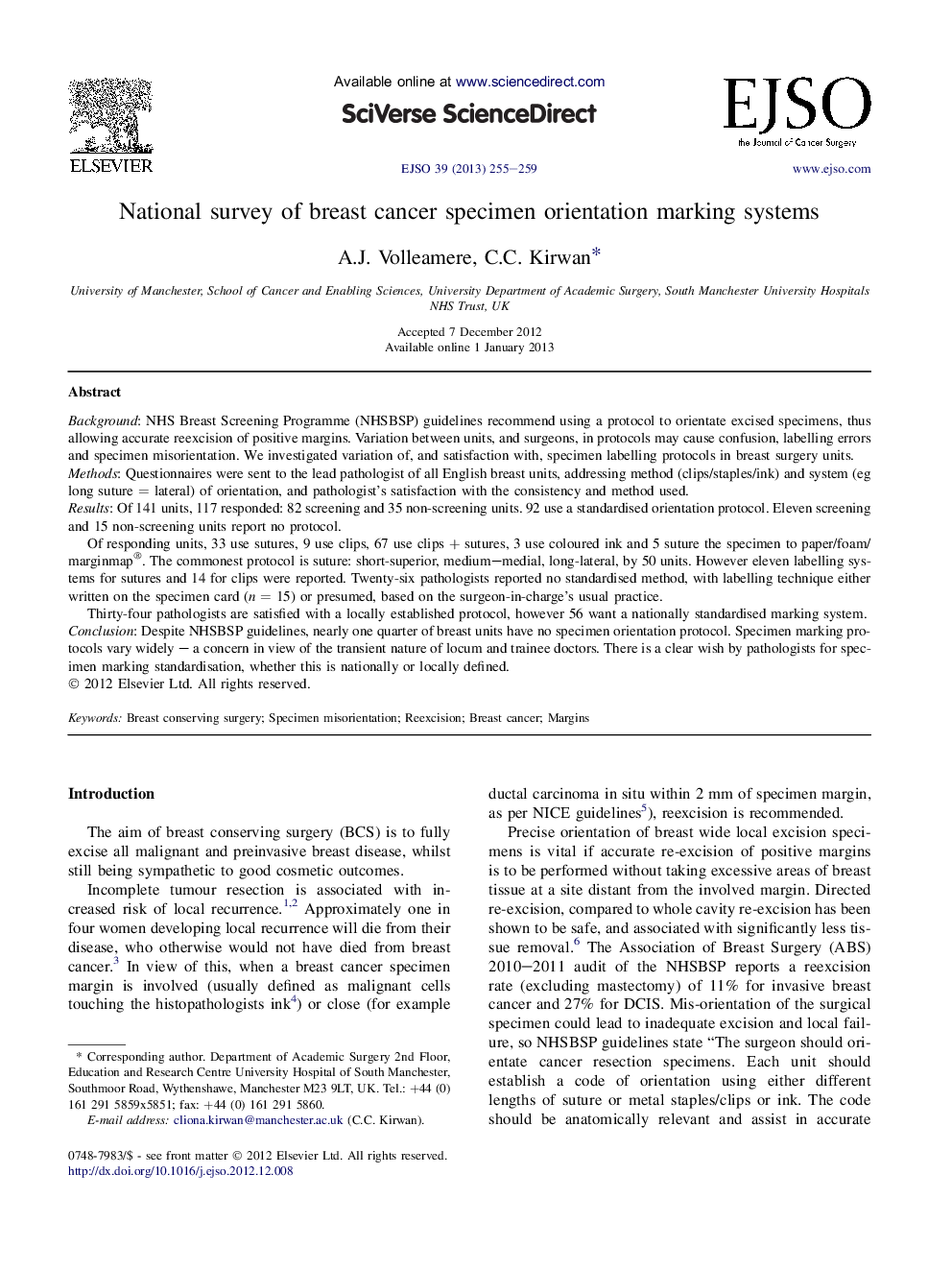| Article ID | Journal | Published Year | Pages | File Type |
|---|---|---|---|---|
| 3985642 | European Journal of Surgical Oncology (EJSO) | 2013 | 5 Pages |
BackgroundNHS Breast Screening Programme (NHSBSP) guidelines recommend using a protocol to orientate excised specimens, thus allowing accurate reexcision of positive margins. Variation between units, and surgeons, in protocols may cause confusion, labelling errors and specimen misorientation. We investigated variation of, and satisfaction with, specimen labelling protocols in breast surgery units.MethodsQuestionnaires were sent to the lead pathologist of all English breast units, addressing method (clips/staples/ink) and system (eg long suture = lateral) of orientation, and pathologist's satisfaction with the consistency and method used.ResultsOf 141 units, 117 responded: 82 screening and 35 non-screening units. 92 use a standardised orientation protocol. Eleven screening and 15 non-screening units report no protocol.Of responding units, 33 use sutures, 9 use clips, 67 use clips + sutures, 3 use coloured ink and 5 suture the specimen to paper/foam/marginmap®. The commonest protocol is suture: short-superior, medium–medial, long-lateral, by 50 units. However eleven labelling systems for sutures and 14 for clips were reported. Twenty-six pathologists reported no standardised method, with labelling technique either written on the specimen card (n = 15) or presumed, based on the surgeon-in-charge's usual practice.Thirty-four pathologists are satisfied with a locally established protocol, however 56 want a nationally standardised marking system.ConclusionDespite NHSBSP guidelines, nearly one quarter of breast units have no specimen orientation protocol. Specimen marking protocols vary widely – a concern in view of the transient nature of locum and trainee doctors. There is a clear wish by pathologists for specimen marking standardisation, whether this is nationally or locally defined.
